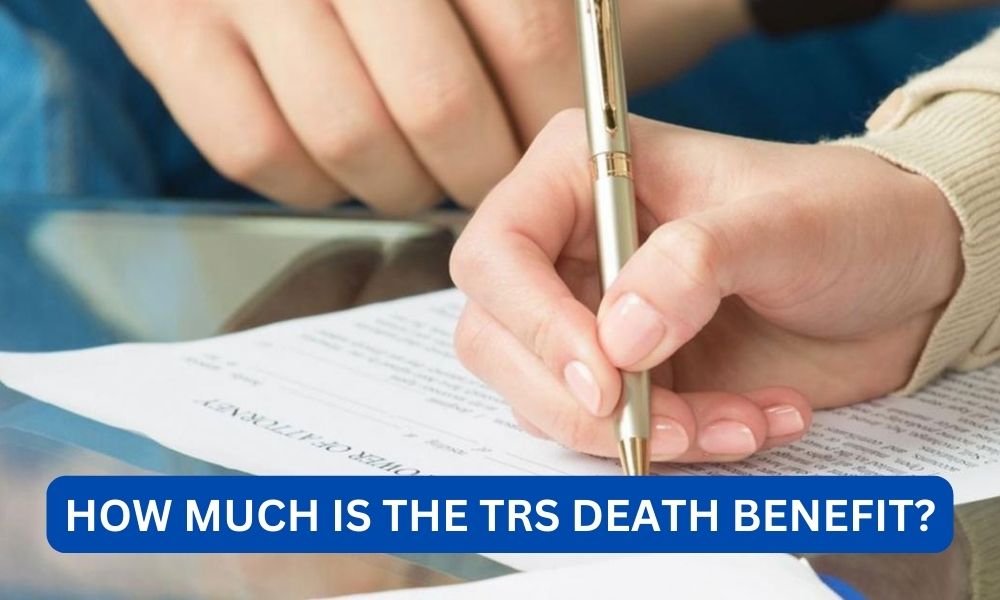The Teacher Retirement System (TRS) is a pension plan for public school employees in the state of Texas. It provides retirement, disability, and death benefits to its members and their beneficiaries. The death benefit is an important aspect of the TRS plan, as it provides financial support to the family of a deceased member. In this article, we will explore the TRS death benefit in detail, including how much it is, who is eligible for it, and how it is calculated.
Contents
What is the TRS Death Benefit?
The TRS death benefit is a lump-sum payment made to the designated beneficiary of a TRS member who dies while actively employed or within 90 days of retirement. It is equal to the member’s accumulated contributions plus interest, up to a maximum of $100,000. This benefit is separate from any life insurance coverage that the member may have through TRS or other sources.
The purpose of the death benefit is to provide financial support to the family of a deceased member. It can help cover funeral expenses, outstanding debts, and provide a source of income for the family. The amount of the death benefit can vary depending on the member’s years of service, salary, and contribution rate.
Read:What is the average social security benefit per monthWho is Eligible for the TRS Death Benefit?
All active TRS members are eligible for the death benefit, regardless of their age or years of service. This includes full-time and part-time employees, as well as substitute teachers. However, the member must have at least one year of service credit to be eligible for the death benefit.
In addition, the member must have designated a beneficiary for the death benefit. If no beneficiary is designated, the death benefit will be paid to the member’s estate. It is important for members to keep their beneficiary information up to date to ensure that their designated beneficiary receives the death benefit in the event of their death.
How is the TRS Death Benefit Calculated?
The TRS death benefit is calculated based on the member’s accumulated contributions plus interest. The member’s contributions are a percentage of their salary, which is determined by their contribution rate. The current contribution rate for most TRS members is 7.7% of their salary.
The interest rate for the death benefit is determined by the TRS Board of Trustees and is subject to change. Currently, the interest rate is 7% for members who joined TRS before September 1, 2005, and 4% for members who joined on or after September 1, 2005.
Read:What age for medicare benefits?For example, let’s say a TRS member has been contributing 7.7% of their salary for 20 years and their salary is $50,000. Their accumulated contributions would be $77,000. If the interest rate is 7%, the death benefit would be $77,000 plus $5,390 in interest, for a total of $82,390.
It is important to note that the maximum death benefit is $100,000, regardless of the member’s accumulated contributions and interest. This means that if a member’s accumulated contributions and interest exceed $100,000, their designated beneficiary will only receive $100,000.
Examples of TRS Death Benefit Calculations
To further understand how the TRS death benefit is calculated, let’s look at a few examples:
Example 1:
John has been a TRS member for 30 years and has a salary of $60,000. His contribution rate is 7.7%, and the interest rate is 7%. His accumulated contributions would be $138,000, and the death benefit would be $138,000 plus $9,660 in interest, for a total of $147,660. However, since the maximum death benefit is $100,000, John’s designated beneficiary would receive $100,000.
Example 2:
Sarah has been a TRS member for 10 years and has a salary of $40,000. Her contribution rate is 7.7%, and the interest rate is 4%. Her accumulated contributions would be $30,800, and the death benefit would be $30,800 plus $4,920 in interest, for a total of $35,720. Since this amount is less than the maximum death benefit of $100,000, Sarah’s designated beneficiary would receive $35,720.
Read:what are the benefits of aarpExample 3:
Mike has been a TRS member for 25 years and has a salary of $80,000. His contribution rate is 7.7%, and the interest rate is 7%. His accumulated contributions would be $154,000, and the death benefit would be $154,000 plus $10,780 in interest, for a total of $164,780. However, since the maximum death benefit is $100,000, Mike’s designated beneficiary would receive $100,000.
How to Apply for the TRS Death Benefit
If a TRS member dies while actively employed or within 90 days of retirement, their designated beneficiary should contact TRS to apply for the death benefit. The beneficiary will need to provide a copy of the member’s death certificate and complete the necessary forms. TRS will then calculate the death benefit and issue a lump-sum payment to the designated beneficiary.
If the member dies after 90 days of retirement, their designated beneficiary will need to contact TRS to apply for the death benefit. However, the death benefit will be reduced by the amount of any monthly retirement payments the member received after retirement.
Other Death Benefits Available to TRS Members
In addition to the TRS death benefit, there are other death benefits available to TRS members and their beneficiaries:
- Survivor Benefits: If a TRS member dies while actively employed, their surviving spouse and dependent children may be eligible for survivor benefits. These benefits include a monthly annuity and health insurance coverage.
- Optional Retirement Program (ORP) Death Benefit: If a TRS member participates in the ORP, their designated beneficiary may be eligible for a death benefit from the ORP provider. This benefit is separate from the TRS death benefit.
- Life Insurance: TRS offers optional life insurance coverage to its members. If a member has this coverage, their designated beneficiary will receive a death benefit from the insurance provider.
Conclusion:
The TRS death benefit is an important aspect of the TRS pension plan. It provides financial support to the family of a deceased member and can help cover funeral expenses, outstanding debts, and provide a source of income. The amount of the death benefit is based on the member’s accumulated contributions plus interest, up to a maximum of $100,000. All active TRS members are eligible for the death benefit, and it is important for members to keep their beneficiary information up to date. In addition to the TRS death benefit, there are other death benefits available to TRS members and their beneficiaries. If you are a TRS member, it is important to understand the death benefits available to you and ensure that your designated beneficiary is aware of the process to apply for these benefits in the event of your death.









